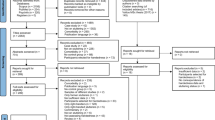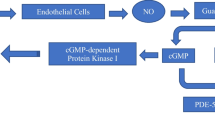Abstract
Stuttering is a disturbance of normal fluency of speech whose pathophysiology is still not well understood. We investigated one of the most ancient speech disorders in the biblical person Moses who lived in approximately 1300 BC. To get the most complete medical and non-medical information on Moses, we did systematic searches in the Holy Bible using the Bible-Discovery v2.3© software (http://www.bible-discovery.com) looking for verses containing the terms “Moses”, “Stuttering” and “Stutter”; and in PubMed/Medline database for manuscripts having the terms “Moses”, “Bible” and “Stuttering”. From the Bible search, 742 verses were found, of which 23 were relevant; three additional verses were found by hand search. Six papers discussing Moses’s pathology were found in the PubMed search. The analysis of ancient descriptions in the light of current research suggests that stuttering is the most likely pathology Moses had, with clear evidence for both genetic origin and environmental triggers. Further, it was found that Moses practiced some “sensory tricks” that could be used to relieve his speech disorder which are, to our knowledge, the first “tricks” that successfully modulated a movement disorder described in the medical literature.


Similar content being viewed by others
References
American Psychiatric Association (2000) Diagnostic and statistical manual of mental disorders, 4th ed edn. American Psychiatric Association, Washington, DC
Buchel C, Sommer M (2004) What causes stuttering? PLoS Biol 2:E46
Lim EC, Wilder-Smith E, Ong BK, Seet RC (2005) Adult-onset re-emergent stuttering as a presentation of Parkinson’s disease. Ann Acad Med Singapore 34:579–581
Theys C, van Wieringen A, De Nil LF (2008) A clinician survey of speech and non-speech characteristics of neurogenic stuttering. J Fluency Disord 33:1–23
Ardila A, Rosselli M, Surloff C, Buttermore J (1999) Transient paligraphia associated with severe palilalia and stuttering: a single case report. Neurocase 5:435–440
Yeoh HK, Lind CR, Law AJ (2006) Acute transient cerebellar dysfunction and stuttering following mild closed head injury. Childs Nerv Syst 22:310–313
Sahin HA, Krespi Y, Yilmaz A, Coban O (2005) Stuttering due to ischemic stroke. Behav Neurol 16:37–39
Mowrer DE, Younts J (2001) Sudden onset of excessive repetitions in the speech of a patient with multiple sclerosis: a case report. J Fluency Disord 26:269–309
Lebrun Y, Leleux C, Retif J (1987) Neurogenic stuttering. Acta Neurochir 85:103–109
Leder SB (1996) Adult onset of stuttering as a presenting sign in a parkinsonian-like syndrome: a case report. J Commun Disord 29:471–477
Mahr G, Leith W (1992) Psychogenic stuttering of adult onset. J Speech Hear Res 35:283–286
Brady JP (1998) Drug-induced stuttering: a review of the literature. J Clin Psychopharmacol 18:50–54
Brosch S, Pirsig W (2001) Stuttering in history and culture. Int J Pediatr Otorhinolaryngol 59:81–87
Ardila A, Bateman JR, Nino CR, Pulido E, Rivera DB, Vanegas CJ (1994) An epidemiologic study of stuttering. J Commun Disord 27:37–48
Fibiger S, Peters HF, Euler HA, Neumann K (2008) Health and human services for persons who stutter and education of logopedists in East-European countries. J Fluency Disord 33:66–71
Craig A, Hancock K, Tran Y, Craig M, Peters K (2002) Epidemiology of stuttering in the community across the entire life span. J Speech Lang Hear Res 45:1097–1105
Mansson H (2000) Childhood stuttering—incidence and development. J Fluency Disord 25:47–57
Hawkins R (2007) Propositions for evangelical acceptance of a late-date exodus-conquest: biblical data and the royal scarabs from Mt. Ebal. J Evang Theol Soc 50:31–46
Holy Bible (2006) King James Version. Casscom Media, New York
Tigay J (1978) “Heavy of mouth” and “heavy of tongue”: on Moses’ speech difficulty. Bull Am Schools Orient Res 231:57–67
Levin S (1992) The speech defect of Moses. J R Soc Med 85:632–633
Garfinkel HA (1995) Why did Moses stammer? and, was Moses left-handed? J R Soc Med 88:256–257
Marshall C (2003) A reconsideration of Moses’ speech disorder. J Fluency Disord 28:71–73
Attanasio JS (1997) Was Moses a person who stuttered? Perhaps not. J Fluency Disord 22:65–68
Appelboom T, Russell A (2003) Moses: did he inherit the spondylarthritis of the Pharaohs? Arthr Rheum 49:142–143
Reina C, Valera C (1997) The Holy Bible: old and new testament. United Bible Societies, Seoul
Felsenfeld S, Drayna D (2001) Stuttering and genetics: our past and our future. In: Gerber SE (ed) The handbook of genetic communicative disorders. Academic Press, San Diego, pp 152–174
Andrews G, Morris-Yates A, Howie P, Martin NG (1991) Genetic factors in stuttering confirmed. Arch Gen Psychiatry 48:1034–1035
Wittke-Thompson JK, Ambrose N, Yairi E et al (2007) Genetic studies of stuttering in a founder population. J Fluency Disord 32:33–50
Starkweather CW (1995) A simple theory of stuttering. J Fluency Disord 20:91–116
Kiziltan G, Akalin MA (1996) Stuttering may be a type of action dystonia. Mov Disord 11:278–282
Braun AR, Varga M, Stager S et al (1997) Altered patterns of cerebral activity during speech and language production in developmental stuttering. An H2(15)O positron emission tomography study. Brain 120:761–784
Wu JC, Maguire G, Riley G et al (1997) Increased dopamine activity associated with stuttering. Neuroreport 8:767–770
Costa D, Kroll R (2000) Stuttering: an update for physicians. CMAJ 162:1849–1855
Starkweather CW (2002) The epigenesis of stuttering. J Fluency Disord 27:269–287
Alm PA (2004) Stuttering and the basal ganglia circuits: a critical review of possible relations. J Commun Disord 37:325–369
Felsenfeld S, Kirk KM, Zhu G, Statham DJ, Neale MC, Martin NG (2000) A study of the genetic and environmental etiology of stuttering in a selected twin sample. Behav Genet 30:359–366
Jaber L, Nahmani A, Shohat M (1997) Speech disorders in Israeli Arab children. Isr J Med Sci 33:663–665
Riaz N, Steinberg S, Ahmad J et al (2005) Genomewide significant linkage to stuttering on chromosome 12. Am J Hum Genet 76:647–651
Suresh R, Ambrose N, Roe C et al (2006) New complexities in the genetics of stuttering: significant sex-specific linkage signals. Am J Hum Genet 78:554–563
Shugart YY, Mundorff J, Kilshaw J et al (2004) Results of a genome-wide linkage scan for stuttering. Am J Med Genet 124A:133–135
Kang C, Riazuddin S, Mundorff J et al (2010) Mutations in the lysosomal enzyme-targeting pathway and persistent stuttering. N Engl J Med 362:677–685
Gordon N (2002) Stuttering: incidence and causes. Dev Med Child Neurol 44:278–281
Khan MA (2002) Update on spondyloarthropathies. Ann Intern Med 136:896–907
Yairi E, Ambrose NG (1999) Early childhood stuttering I: persistency and recovery rates. J Speech Lang Hear Res 42:1097–1112
García R. Saber qué decir y no poder hacerlo. http://www.lanueva.com/edicion_impresa/nota/25/02/2009/92p085.html (Accessed July, 2010)
Packman A, Onslow M, Reilly S, Attanasio J, Shenker R (2009) Stuttering and bilingualism. Arch Dis Child 94:248
van Borsel J, Maes E, Foulon S (2001) Stuttering and bilingualism: a review. J Fluency Disord 26:179–205
Brin MF, Stewart C, Blitzer A, Diamond B (1994) Laryngeal botulinum toxin injections for disabling stuttering in adults. Neurology 44:2262–2266
Goldberg B (1989) Historic treatments for stuttering: from pebbles to psychoanalysis. ASHA 31:71
Van Riper C (1973) The treatment of stuttering. Prentice-Hall, Englewood Cliffs, NJ
Brady JP (1991) The pharmacology of stuttering: a critical review. Am J Psychiatry 148:1309–1316
Stuart A, Kalinowski J, Saltuklaroglu T, Guntupalli VK (2006) Investigations of the impact of altered auditory feedback in-the-ear devices on the speech of people who stutter: one-year follow-up. Disabil Rehabil 28:757–765
Al Abdulmohsen T (2010) Aberration in hearing one’s own voice can cause not only stuttering but also depression. Med Hypoth 74:784–788
Ludlow CL, Loucks T (2003) Stuttering: a dynamic motor control disorder. J Fluency Disord 28:273–295
Hallett M (1995) Is dystonia a sensory disorder? Ann Neurol 38:139–140
Bohlhalter S, Leon-Sarmiento FE, Hallett M (2007) Abnormality of motor cortex excitability in peripherally induced dystonia. Mov Disord 22:1186–1189
Neef NE, Paulus W, Neef A et al (2011) Reduced intracortical inhibition and facilitation in the primary motor tongue representation of adults who stutter. Clin Neurophysiol 122:1802–1811
Bara-Jimenez W, Shelton P, Sanger TD, Hallett M (2000) Sensory discrimination capabilities in patients with focal hand dystonia. Ann Neurol 47:377–380
Glover H, Kalinowski J, Rastatter M, Stuart A (1996) Effect of instruction to sing on stuttering frequency at normal and fast rates. Percept Mot Skills 83:511–522
Acosta MT, Montanez P, Leon-Sarmiento FE (2002) Half brain but not half function. Lancet 360:643
Leon-Sarmiento FE, Bayona E, Bayona-Prieto J (2009) Neurorehabilitation: the other revolution of 21st century. Acta Med Col 32:88–92
Acknowledgments
The authors offer their special thanks to Dr. Carlos V. Rizzo, PhD, and Edgardo Bayona, MD (s) for their helpful comments and to Doctor Richard L. Doty for kind support. Doctor FE Leon-Sarmiento was supported by grants from the NIH (R01 DA019055-04) and from the US Department of Defense (USAMRAA W81XWH-09-1-0467).
Author information
Authors and Affiliations
Corresponding author
Rights and permissions
About this article
Cite this article
Leon-Sarmiento, F.E., Paez, E. & Hallett, M. Nature and nurture in stuttering: a systematic review on the case of Moses. Neurol Sci 34, 231–237 (2013). https://doi.org/10.1007/s10072-012-0984-2
Received:
Accepted:
Published:
Issue Date:
DOI: https://doi.org/10.1007/s10072-012-0984-2




